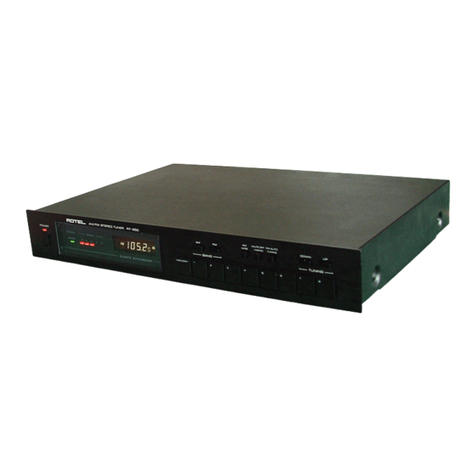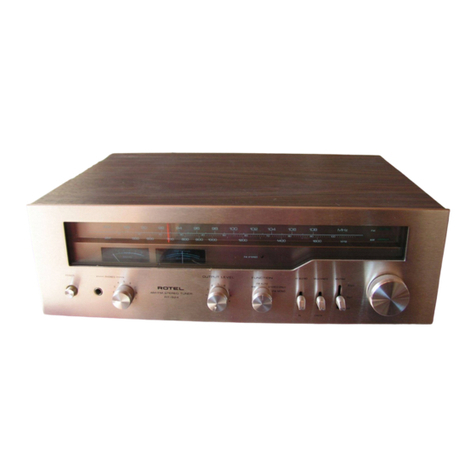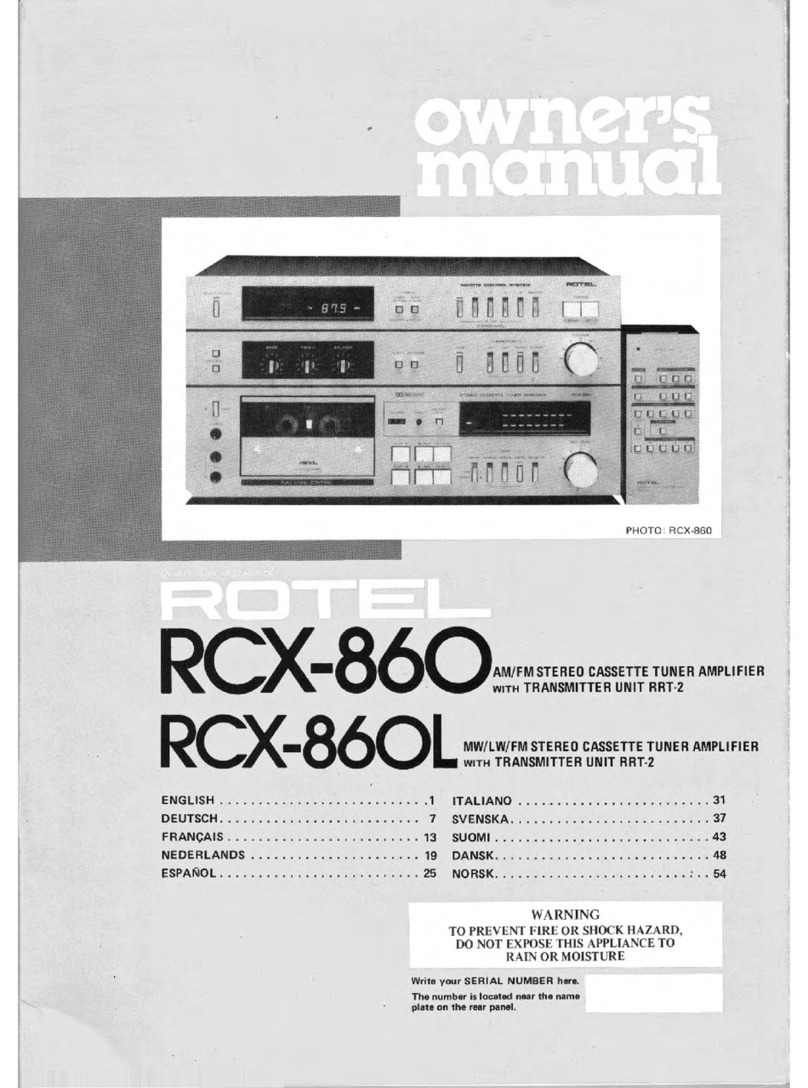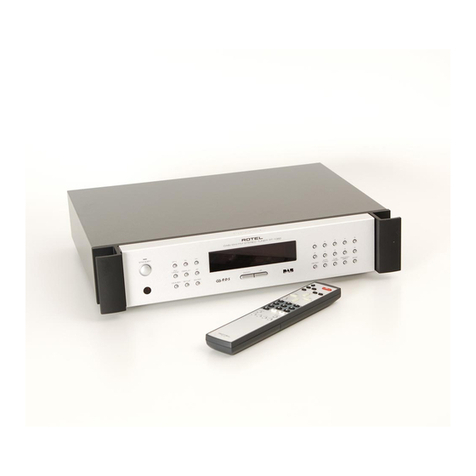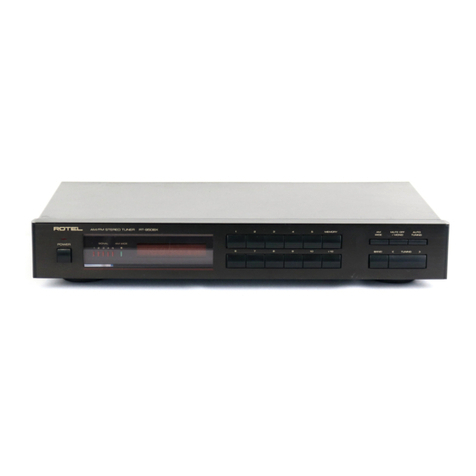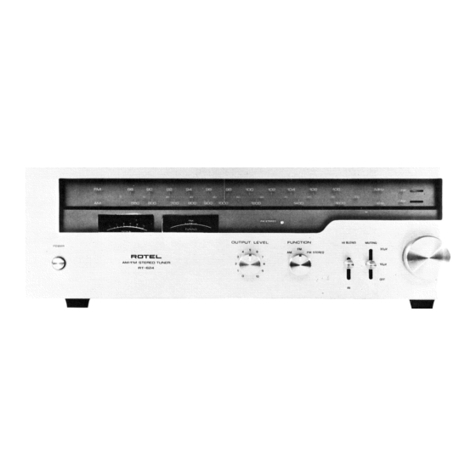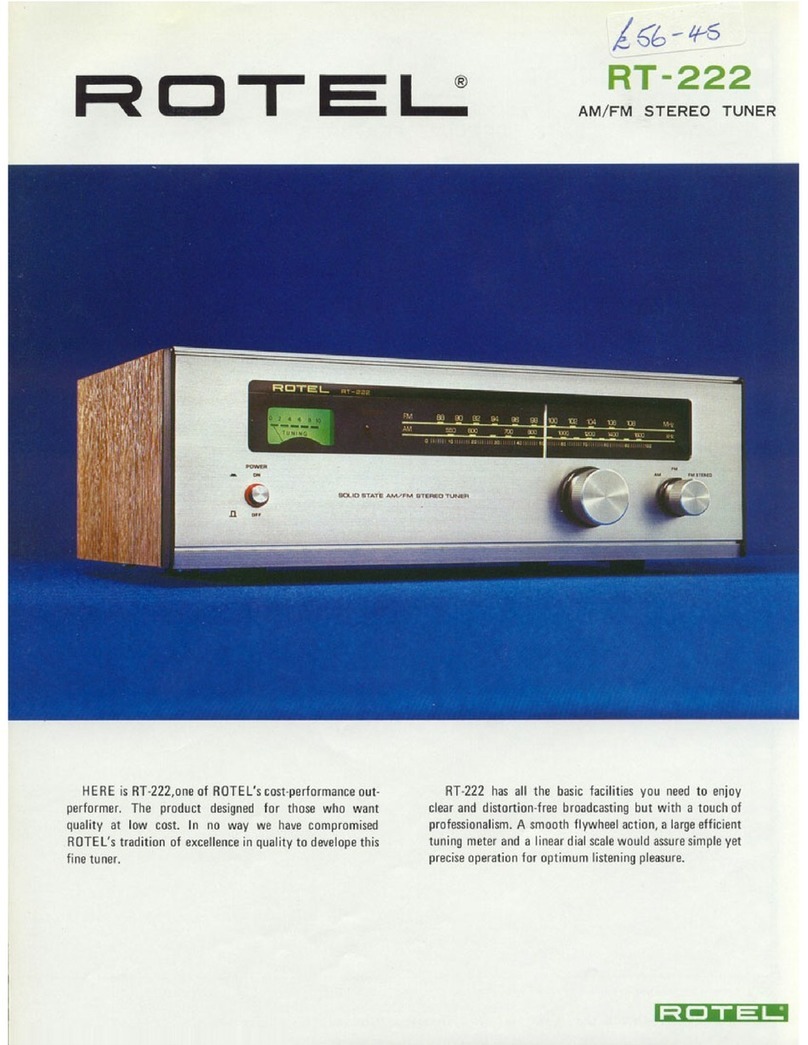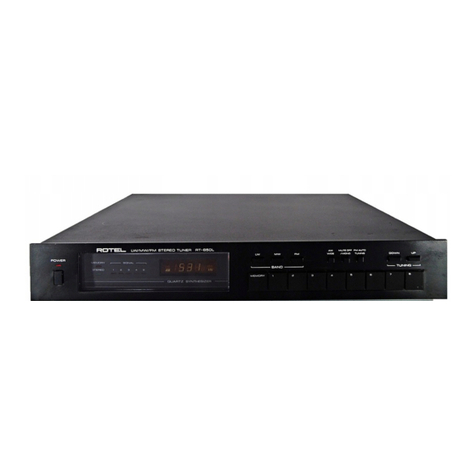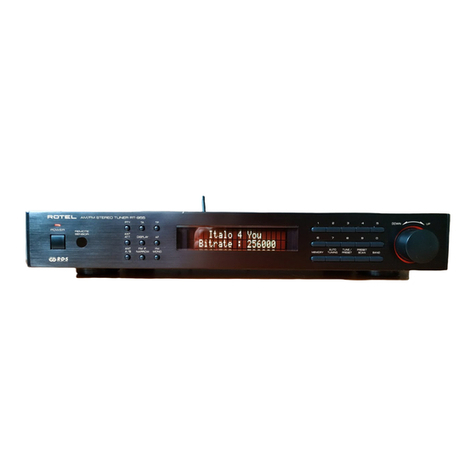Rotel RT-870 User manual
Other Rotel Tuner manuals
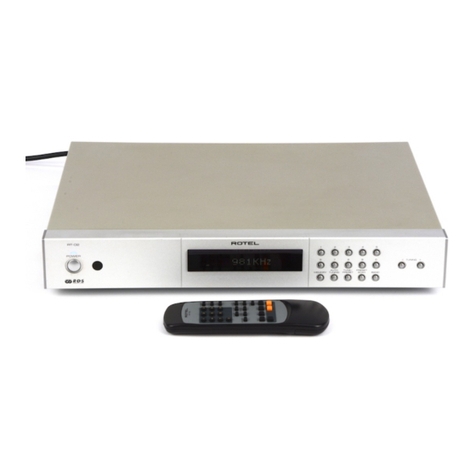
Rotel
Rotel RT-02 User manual
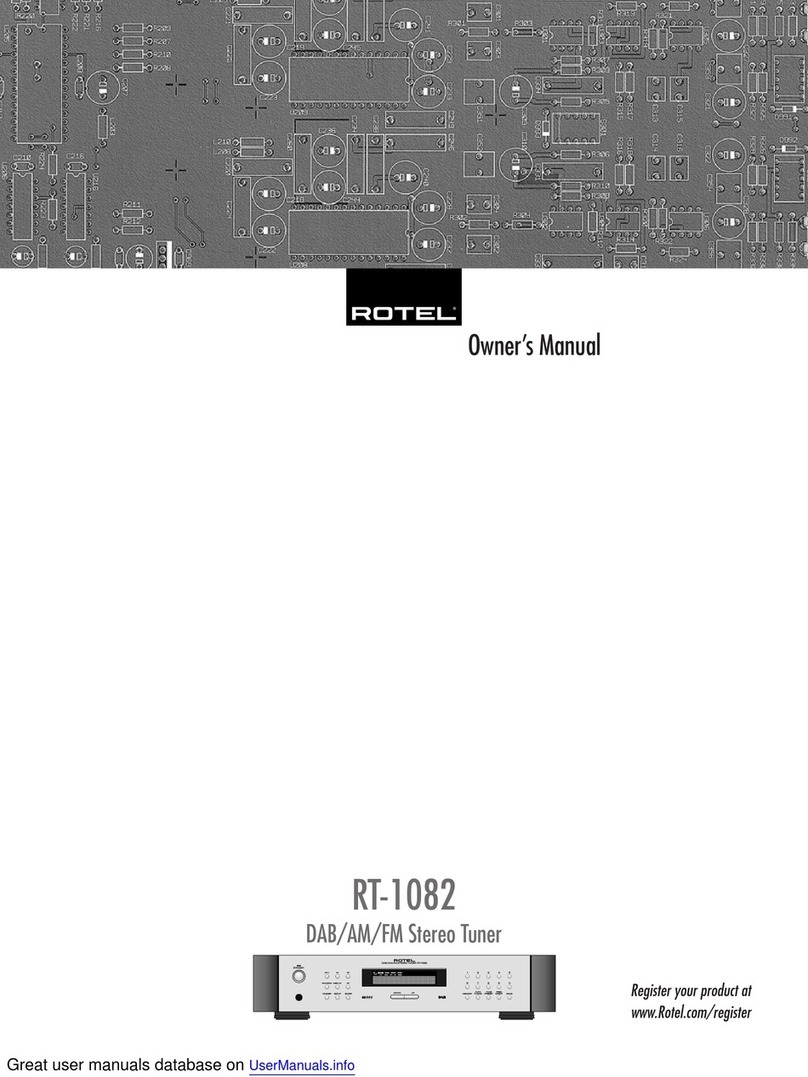
Rotel
Rotel RT-1082 User manual
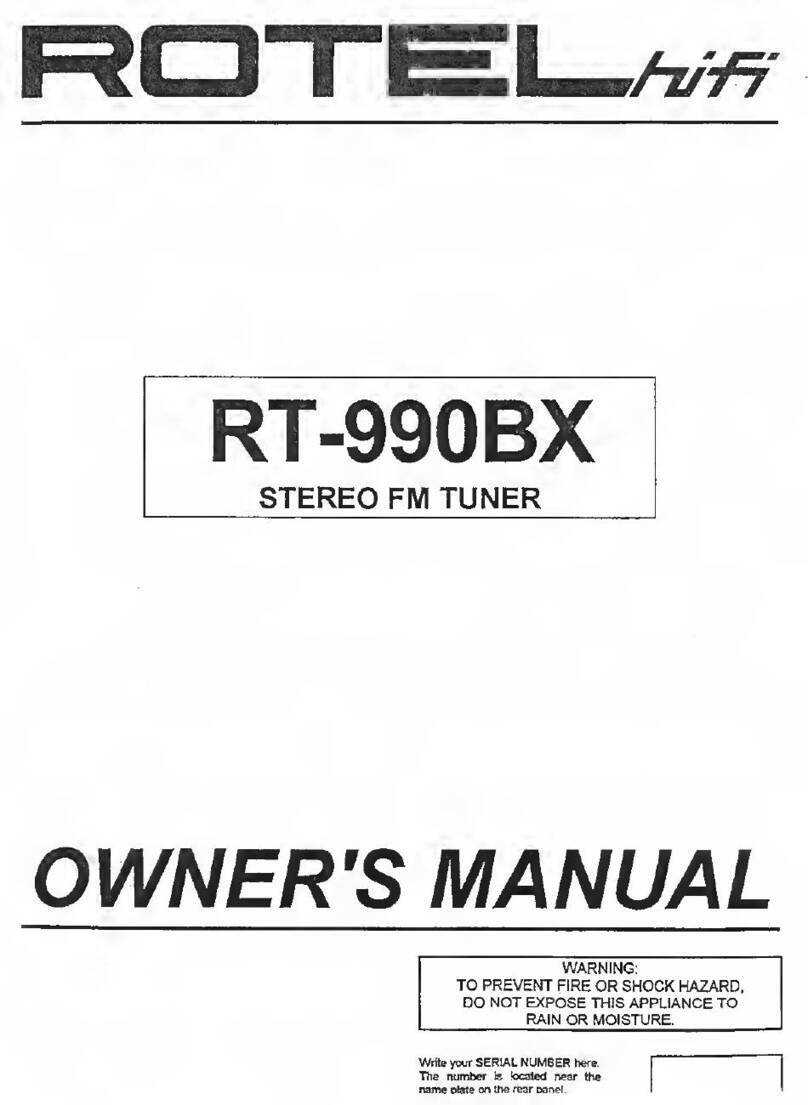
Rotel
Rotel RT-990BX User manual
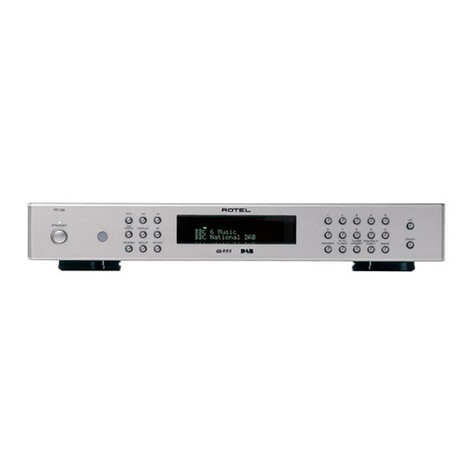
Rotel
Rotel RT-06 User manual
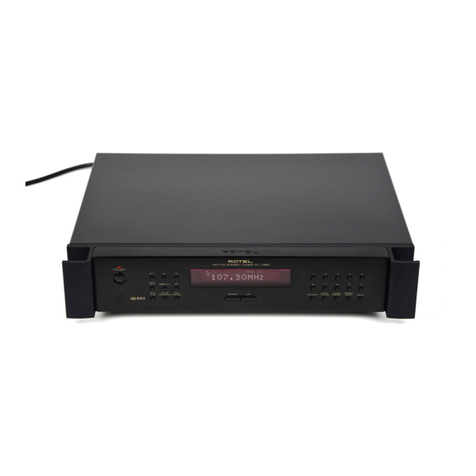
Rotel
Rotel RT-1080 User manual
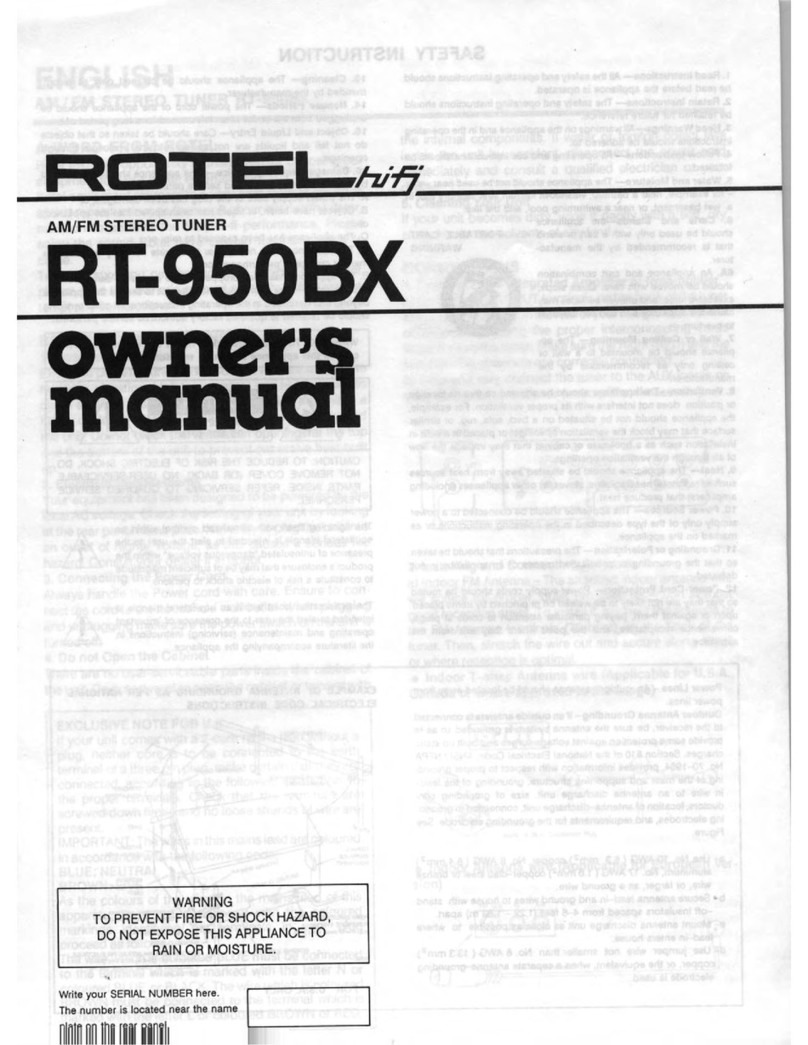
Rotel
Rotel RT-950BX User manual

Rotel
Rotel HIFI RT-970BX User manual
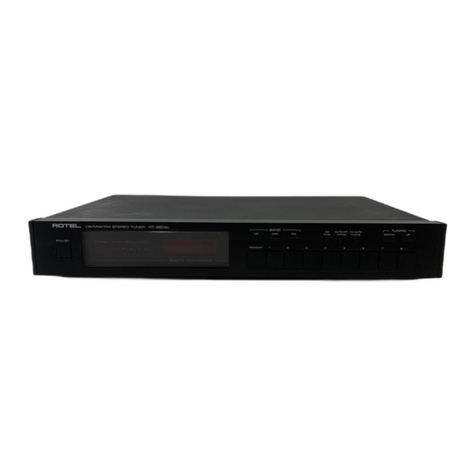
Rotel
Rotel rt-850a User manual
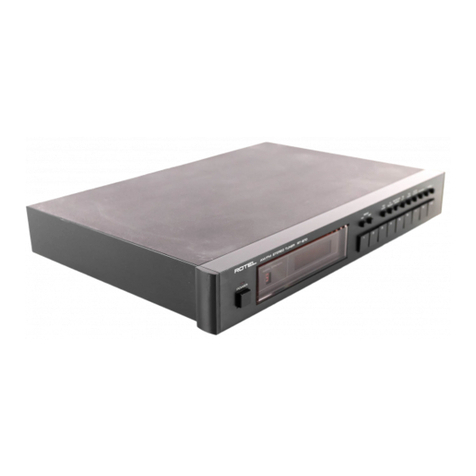
Rotel
Rotel RT-870 User manual
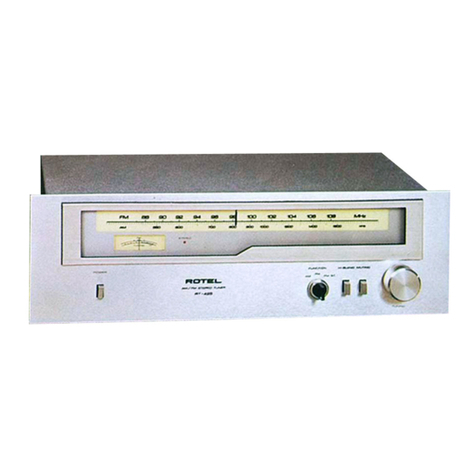
Rotel
Rotel RT-425 User manual
Popular Tuner manuals by other brands

NAD
NAD C 445 owner's manual

Sony
Sony ST-SA5ES operating instructions

Pioneer
Pioneer GEX-P700DAB Operation manual

Sirius Satellite Radio
Sirius Satellite Radio SC-FM1 user guide

Antique Automobile Radio
Antique Automobile Radio 283501B Installation and operating instructions

Sanyo
Sanyo FMT M15L Service manual

